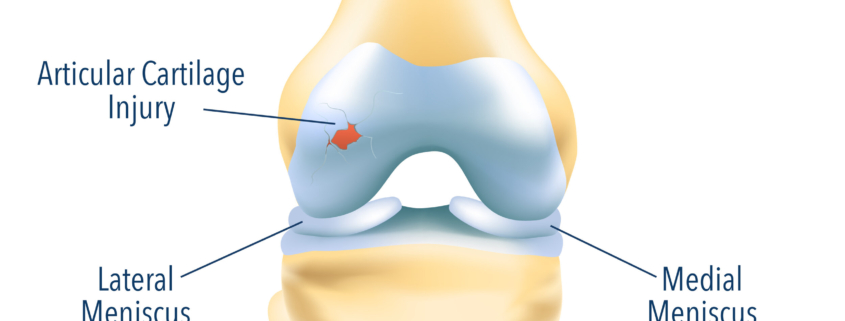Articular Cartilage Problems of the Knee

Overview
Articular cartilage is the smooth, slippery tissue that covers the ends of bones within the joints. In the knee, this cartilage buffers the shinbone (tibia), upper leg bone (femur), and kneecap (patella), allowing them to slide freely and smoothly as the knee bends, straightens, and bears weight. Articular cartilage problems refer to injuries or damage to this tissue, and they can result in knee pain, swell or limited mobility. These problems are common among athletes, older adults, or people with certain medical conditions.
Types
Articular cartilage problems of the knee can be classified into:
1. Cartilage wear and tear: Often linked to aging or overuse, this gradual degeneration can lead to conditions like osteoarthritis.
2. Cartilage injury: A sudden impact or twist of the knee can result in tears or fractures in the cartilage.
3. Cartilage diseases: Medical conditions, like osteochondritis dissecans, can cause cartilage damage.
Causes
Articular cartilage problems can result from various factors. Notable causes and risk factors may include:
– Old age
– Obesity
– Overuse or strain from certain activities
– Knee injury or trauma
– Inherited genetic factors
– Specific conditions, such as rheumatoid arthritis
Symptoms
The most common symptoms of articular cartilage problems include:
– Knee pain
– Swelling in the knee
– Stiffness or reduced mobility
– A “grating” or “catching” sensation in the knee
– Weakness or instability in the knee
Diagnosis
Articular cartilage problems are usually identified through a combination of medical history, physical examination and imaging tests such as:
– X-Ray
– MRI
- CT Scan
However, in many cases, a definitive diagnosis can only be made through arthroscopy, a surgical procedure that allows the doctor to look inside the knee joint.
Treatment Options
Treatment for articular cartilage problems aims at relieving symptoms and restoring knee function. The options include:
– Conservative therapies: This may involve rest, physical therapy, pain management, and wearing a brace.
– Surgery: Procedures like microfracture, autologous chondrocyte implantation, and osteochondral grafting can treat cartilage defects.
– Medication: Nonsteroidal anti-inflammatory drugs (NSAIDs) and corticosteroids can help manage swelling and pain.
Living With Articular Cartilage Problems of the Knee
Managing this condition efficaciously requires commitment and self-care. Some strategies include:
– Maintaining a healthy weight to reduce stress on the knee joint.
– Regular exercise to strengthen the surrounding muscles and improve joint stability.
– Taking prescribed medication and following physical therapy routines regularly.
– Using assistive devices like braces or crutches as per the doctor’s advice.
– Having routine check-ups to monitor the condition and adjust treatment as required.
When to Seek Help
If you experience any of the following, it’s imperative to urgently seek medical attention:
– Severe knee pain, a sudden increase in pain, or pain that doesn’t better with rest.
– Inability to move or bear weight on the affected knee.
– Swelling in the knee that does not subside with rest or use of over-the-counter medications.
– Any new or sudden symptoms following a knee injury.
Understanding articular cartilage problems and proper management can help improve your knee function and mobility, enabling you to return to an active and pain-free lifestyle. Always communicate openly with your healthcare provider and follow the prescribed treatment plan to manage this condition effectively.
